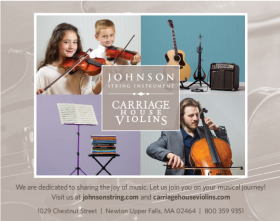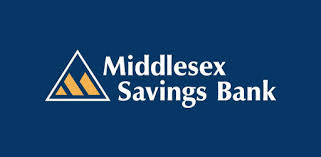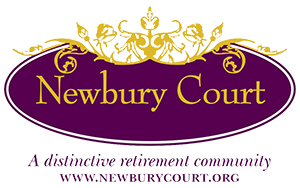Search
Friday, March 14, 2014, 8 pm • First Parish, Wayland
Saturday, March 15, 2014, 3 pm • Old South Church, Boston
Allegro from Sinfonia in D Minor, HW I/3 Johann Christoph Friedrich Bach (1732-1795)
Lobe den Herrn Johann Christian Geisler (1729-1815)
Du bist unsre Zuversicht Christian Gregor (1723-1801)
Setzet eure Hoffnung Johann Ludwig Freydt (1748-1807)
In allen Dingen Johann Friedrich Peter (1746-1813)
Quartet in C Major for flute and strings, op. 1, no. 6 Joseph Haydn (1732-1809)
Presto assai • Minuet • Adagio • Minuet • Finale (Allegro)
Ich seh, ich seh mit Haufen Johann Ludwig Freydt (1748-1807)
Go Congregation, Go and See John Antes (1740-1811)
Ach Schönster unter allen Johann Peter Kellner (1705-1772), arr. by Christian Gregor
Intermission
Trio Sonata in D Major for viola, cello and continuo Johann Daniel Grimm (1719-1760)
Adagio • Poco Allegro • Moderato
Dies Volk habe ich J. L. Freydt
Küsse uns, wenns Herz in Wehmuth Christian Gregor
Trio no. 3 in C Major for two violins and cello John Antes
Larghetto • Grave—Allegro
Lieblichkeiten, die nicht aus zusprechen J. L. Freydt
So ihr bleiben J. C. Geisler
Dies ist ein Tag Johannes Herbst (1735-1812)
Kathryn Mueller and Kathryn McKellar, sopranos
Suzanne Stumpf, traverso; Sarah Darling and Jesse Irons, violins
Marcia Cassidy, viola; Daniel Ryan, cello; Michael Bahmann, harpsichord
flute by Martin Wenner, after Palanca
violins by anon. (possibly French) labeled Carlo Bergonzi, and Victor LeCavalle, c. 1850
viola by T. Andreas Johnson, 1994, after P. G. Mentegazza, c. 1780
cello by an anonymous Belgian maker, c. 1700; harpsichord by Jacob Kaeser, 1993, after German models
The Wayland concert is co-presented by the Wayland Historical Society
and is funded, in part, by the Wayland Cultural Council, a local agency which is
supported by the Massachusetts Cultural Council, a state agency.
Program Notes
The Moravian church was founded by the followers of Jan Hus, a priest who was executed as a heretic in 1415. In 1457, Hus’s followers organized a society called the Unity of the Brethren (Unitas Fratrem). This nascent church lead a precarious existence and was nearly wiped out by the ravages of the Counter Reformation, the Thirty years war, and other religious persecution. In 1722 the Unitas Fratrem found support and protection at the residence of Count Nikolaus von Zinzendorf in Saxony and began to grow and flourish. A highly evangelical denomination, the Moravians sent missionaries to far-flung places such as Greenland, the West Indies, Africa, and the British colonies. They established their first community in North America in Bethlehem, Pennsylvania in 1741. This was soon followed by two other communities in Pennsylvania and three in North Carolina.
Since its reestablishment in 1722, music held a central role in the life of the Moravian church communities and was considered not an ornament but a necessity of life. In this communal society, opportunities were given for all to learn music and to contribute to the music of the worship services according to ability. In addition to its important role in worship, music was a frequent component of daily life. The nearly universal level of musical literacy of its members is an extraordinary aspect of this society, and their level of musical participation, both in quality and quantity of the early American Moravian communities is astonishing. This program gives a small sampling of the music that was performed in both sacred and secular contexts at the Moravian community of Salem, North Carolina during the “golden age” of Moravian music (1760-1800).
A regular feature of Moravian liturgies was the inclusion of musical works for voices and instrumental ensemble. The musical style of Moravian vocal works of this period placed an emphasis on directness of expression meant to “edify” and awaken devotional feelings for its listeners, eschewing contrapuntal complexity and overt displays of virtuosity. This Enlightenment-era aesthetic is also represented in the style of galant and emfpindsamer stil pre-classical composers such as Graun, Hasse, and C.P.E. Bach (all of whose works were part of the Moravian repertory). Rather than employing the multi-movement cantata format of the Lutheran liturgy, these were nearly aways short, single movement works set to texts derived from scripture, a hymn, or a randomly drawn losung or “watchword.”
The vast majority of Moravian sacred vocal music is written for choir and small orchestra. However, works for solo and duo voices were also composed that are more intimate in character, and with this program, we are please to revive several of these. The Moravians’ emphasis on clarity and directness of expression may be best illustrated in the vocal duets. As a typical example, in J. C. Geisler’s Lobe den Herrn, the instrumental parts include lively and brilliant figuration, while the vocal parts use longer note values and move homophonically, allowing the text be clearly understood. The work contains only a few passages for solo voice. The rich figural backdrop of the instrumental writing provides a foil to the relative simplicity of the vocal parts. Particularly engaging instrumental writing includes the chromaticisms in Du bist unsre Zuversicht, the passionate, accented off-beats in Ich seh, ich seh mit Haufen, the contrapuntal imitation in Küsse uns, and the conversational passing of motifs in Lieblichkeiten, die nicht aus zusprechen.
Perhaps the most intimate of the sacred music genres are the solo arias. In these compositions, the vocal writing is much more fully integrated with the instrumental texture and, with the works that employ obbligato flute, include attractive musical dialogue with that instrument. One of the most moving arias of this repertoire is one if its most unusual. John Antes’s affecting Go, Congregation is among the few Moravian vocal works of this period with a text in English and is a rare aria that does not include an instrumental introduction.
Performance of instrumental music was always an important component of the Moravian’s music-making activities, both as a means to improve skill in the execution of instrumental parts in the sacred vocal works and as an end in itself. Since in Moravian theology there is no distinction between the sacred and the secular, the performance of instrumental music was an activity that was strongly encouraged. The Moravian composer C. I. LaTrobe described its two functions: “The practice of Instrumental Music is recommended by the Brethren, as a most useful substitute for all those idle pursuits, in which young people too often consume their leisure hours; and since its application as an accompaniment and support to the voice is calculated to produce the most pleasing effect, its use in the Church has been retained.” Soon after their founding, all Moravian communities established collegia musica, weekly gatherings dedicated to the informal performance of instrumental music. Some of America’s first composers were members of the Moravian communities, including J. F. Peter, and John Antes.
Antes began his contribution to Moravian musical life as an instrument maker in Bethlehem, Pennsylvania where he received his entire musical training. His talent as a craftsman led him to the trades of stringed instrument making, cabinetry, and watchmaking. In 1764, he traveled to Moravian communities in Germany for training and apprenticeships, was ordained a minister in 1769, and undertook missionary service in Egypt in 1770-71. There he composed his only surviving chamber works, a set of three trios which he had published in London in 1790 as his opus 3. They show a lively imagination tempered by fine craftsmanship—admirable work for the “dilettante Americano” he described himself on the title page of this opus.
Johann Daniel Grimm was a pioneering composer of the Moravian church who wrote some of the earliest Moravian cantatas, helped to compile an important hymnal, and wrote many instrumental works. Although he was based at the Herrnhut community in Germany, his works were widely disseminated in America. The Salem collegium musicum contains a trio for the rare instrumentation of viola, cello, and continuo. Grimm makes effective use of the low timbres of the strings, particularly in the opening Adagio.
The works of Joseph Haydn were a frequent feature in the performances of the Moravian collegia musica. The archive of the Salem collegium contains a manuscript copy of four early Haydn quartets arranged for flute and strings. The undated, anonymous arrangement contains a version of Haydn’s op. 1, no. 6 quartet which, apart from adjustments made to the first violin part to accommodate it to the compass of the flute, differs in many aspects from the original. There are several phrases originally consisting of an odd number of measures which have expanded or contracted to conform to more conventional even phrase lengths. The first minuet uses an alternate trio, while in the second minuet, the trio is omitted altogether. These modifications offer a fascinating window into performance practices in that milieu.
The remarkable state of preservation of Moravian archives has been a boon to modern researchers, and it is astonishing that tens of thousands of handwritten musical manuscripts have survived intact. In fact, there are works by European composers that only survive in Moravian manuscript copies, including the J. C. F. Bach’s Sinfonia in D Minor that opens our program. The ninth son of J. S. Bach, J. C. F. Bach was prolific composer who served at the court in Bückeburg, Germany for most of his career, but many of his compositions were destroyed during World War II.
— © Daniel Ryan and Suzanne Stumpf











Daniel Ryan and Suzanne Stumpf, Artistic Directors
349 Boston Post Road, Weston, MA 02493
tel. (781) 466-6694
All content © Musicians of the Old Post Road
Privacy Policy
Terms & Conditions
